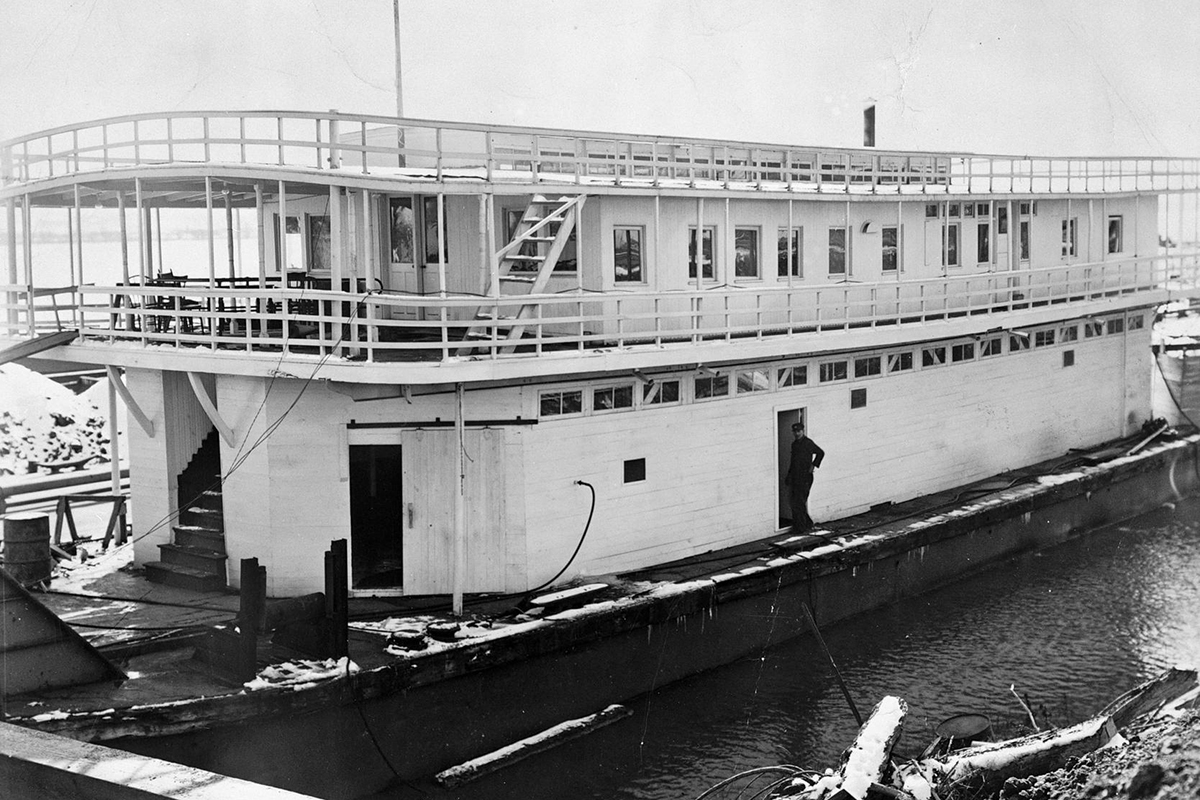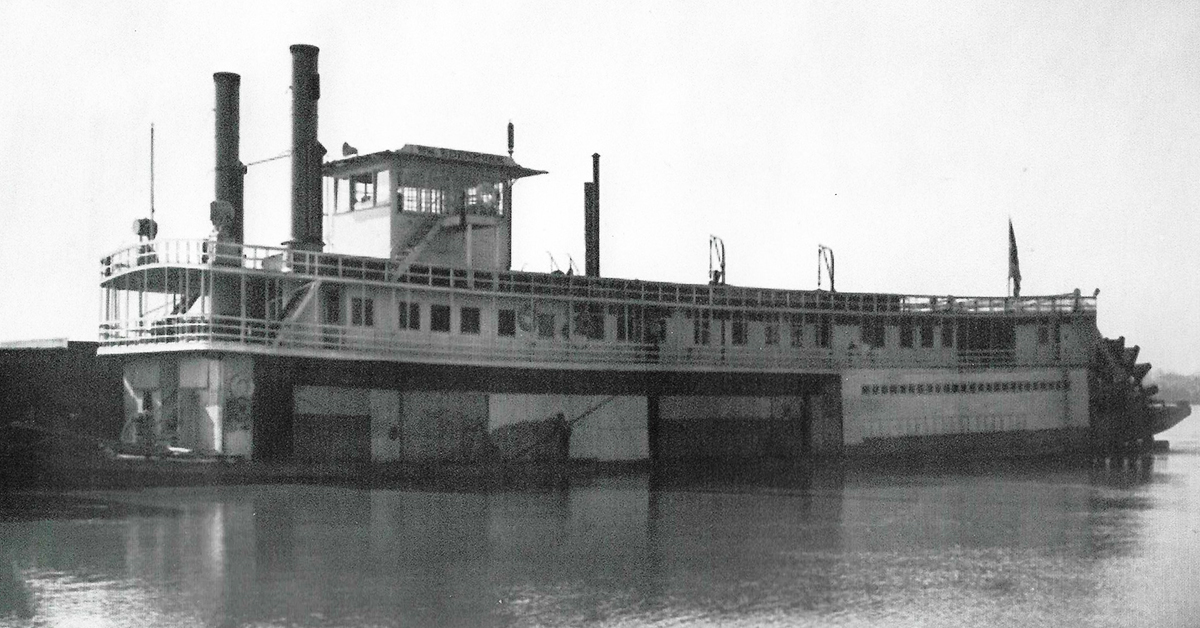This column detailed the steamer Wm. Edenborn in the April 28 issue of The Waterways Journal. In conducting research on another vessel, I came across some new information that warrants a further look at that boat.
As described in the previous column, the Wm. Edenborn was built in 1913 for the Louisiana Railway and Navigation Company (LRNC), which William Edenborn formed in 1903. Edenborn immigrated to this country from Germany in 1867 and was successful in the production of steel wire. After inventing new concepts in the manufacture of barbed wire, he eventually controlled some 75 percent of that market. In 1898, Edenborn merged several companies into the American Steel and Wire Company, which was sold in 1901 to financier J.P. Morgan, who made them a part of his United States Steel.
The sale made William Edenborn one of the wealthiest men in the United States at the time, and he relocated to Louisiana and turned his interest to railroads. The LRNC had a network of railroads throughout the Pelican State and had the motto of being the “Short Line Through Louisiana.” The railroad had a transfer ferry service across the Lower Mississippi at Angola, La. The 143-foot by 36-foot Wm. Edenborn was built for that service, joining the Sarah Edenborn, named for William Edenborn’s wife. Both boats were built by American Bridge Company at Ambridge, Pa., and were steel hull, steam, sternwheel boats.
The Huey P. Long-O.K. Allen Bridge at Baton Rouge opened in 1940, and the LRNC arranged to have its rolling stock to cross the river there, rendering the two steamboats and track barges obsolete. In 1941, the fleet was sold to the Sohio Petroleum Company. Capt. Leo Birch McBride of Louisville, Ky., brought the fleet to his landing in the Louisville area for renovations to convert the boats from the transfer service to river towing.

The July 26, 1941, issue of The Waterways Journal carried a story about the boats and track barges preparing to depart Angola for Louisville and had some additional information on the boats. While the hull and cabins were built at Ambridge, Charles Barnes Company of Cincinnati produced the engines for the Wm. Edenborn, and the incomplete boat was brought there for machinery installation. The engines were 15’s, 28’s–8- foot stroke rated at 1,400 hp., and the boilers were oil fired. Both boats had a very tall pilothouse with a small texas cabin forward of that, which contained special guest apartments for the wealthy but frugal Mr. and Mrs. Edenborn, who spent many weekends aboard the boats.
The August 16, 1941, issue of the WJ mentioned the arrival of the boats in the Louisville news column, penned by C.W. Stoll. Alan L. Bates, a former author of this column, mentioned in his book, McBride’s River, that Sohio grew frustrated with the time that the rebuilding project was taking and moved the boats across the Ohio River to the Howard yards. The October 11, 1941, issue of the WJ again mentioned the boats, saying that the Sarah Edenborn had been taken to St. Louis Shipbuilding & Steel Company, arriving there on October 2 with Capts. Bruce Barnes and John Trail as pilots. St. Louis Ship was also building eight new tank barges for Sohio and was to convert the two railroad transfer barges once handled by the Edenborn boats into four tank barges.
The story went on to say that Louisville correspondent C.W. Stoll reported that the Wm. Edenborn was “at the plant of the Jeffersonville (Ind.) Boat and Machine Company,” where conversion repairs were underway with the sternwheel and machinery “torn down.”
“This boat, reported to have been the late Mr. Edenborn’s favorite, has undergone some alterations inside,” the article stated. “The nicely furnished private stateroom which he maintained has been cut down.”
The general arrangement of the upper cabin was rearranged extensively. The high pilothouse was replaced with a shorter one, which was placed farther forward on the roof. In addition, towknees were added to the bow.
Following the conversion, the Wm. Edenborn entered service towing petroleum, and in the spring of 1942, it was renamed Atlas. The Sarah Edenborn was renamed Renown.
In 1945, both were sold to Island Creek Fuel & Transportation Company. The Atlas was converted from oil to burn coal, but Island Creek never operated it. In July 1947, it was sold to the American Rolling Mill Company, which made a few trips with it and then had the machinery removed with the reported intention of placing it on the Charles R. Hook. The Atlas was sold to Wheeling Steel at New Boston, Ohio, which utilized it as a landing boat until it was sold to Capt. Harry White in 1960.
As related in the April 28 Old Boat Column, Merdie Boggs & Sons Towing and Harbor Service acquired the Atlas from White and, for many years, used it as an office and landing at Catlettsburg, Ky. A few years ago, it was replaced and sold to unknown individuals. The deteriorating remains now lie along the Kentucky shore of the Ohio River a short distance above Greenup, Ky.
Featured image caption: Wm Edenborn just after rebuilding for river towing. (From the author’s collection)



